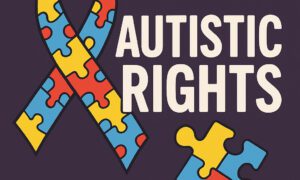In today’s fast-changing world, technology has transformed every aspect of our lives, and education is no exception. From virtual classrooms to smart devices and online resources, technology has made learning more interactive, accessible, and efficient. Students today have access to a wealth of tools and platforms that enhance their understanding, improve productivity, and personalize their study experience. Among these innovations, AI tools for students are leading the way, offering personalized learning paths, instant feedback, and intelligent study support that make education more engaging and effective.
The Digital Shift in Education
The education landscape has evolved dramatically in the past decade. Traditional classrooms and printed textbooks have given way to digital ecosystems that promote flexibility and inclusivity. E-learning platforms, educational apps, and online courses have removed geographical barriers, allowing students to learn from anywhere and at any time.
This digital shift became even more evident during the COVID-19 pandemic, when online learning became a necessity rather than an option. Schools, colleges, and universities adapted by adopting new technologies that ensured continuity in education. Platforms like Zoom, Google Classroom, and Microsoft Teams enabled real-time virtual interactions, bridging the gap between teachers and learners. This period of rapid adaptation opened the door for more advanced technologies like artificial intelligence (AI), machine learning, and augmented reality (AR) to reshape the future of learning.
Today, technology is not just supporting education—it’s redefining it. It is helping students learn faster, educators teach better, and institutions deliver more efficient systems that cater to diverse learning needs.
Personalized Learning Through Artificial Intelligence
One of the most transformative aspects of emerging technology in education is personalization. Unlike traditional classrooms, where a single teaching style must accommodate everyone, AI-powered platforms can tailor lessons according to individual learning speeds, preferences, and strengths.
AI-driven systems analyze how students interact with content—identifying patterns, weaknesses, and areas for improvement. Based on this analysis, the system provides customized resources, quizzes, and study plans. For instance, intelligent tutoring systems can adapt the difficulty of questions or recommend specific topics that need revision. This approach ensures that every student progresses at their own pace, reducing frustration and enhancing understanding.
Moreover, AI chatbots and virtual tutors are becoming increasingly popular as on-demand learning assistants. They can answer questions, explain concepts, and provide practice problems 24/7, ensuring continuous support. This level of personalization was once unimaginable in traditional learning environments, but AI has made it possible—and scalable.
Gamification and Interactive Learning
Learning has traditionally been viewed as a serious and often monotonous task. However, gamification has changed that perception entirely. By incorporating game-like elements—such as rewards, badges, leaderboards, and challenges—educational platforms are making learning fun and engaging.
Interactive apps like Duolingo for languages or Kahoot for classroom quizzes use gamified methods to encourage participation and motivation. These platforms stimulate curiosity and competition, both of which are strong drivers of engagement. When students enjoy the process, they tend to retain information better and feel more confident in applying what they learn.
In addition, virtual and augmented reality (VR/AR) technologies are creating immersive learning environments that allow students to visualize and experience complex concepts. For instance, a biology student can explore a 3D model of the human body, or a history student can take a virtual tour of ancient civilizations. Such experiences promote deeper understanding and long-term memory retention, bridging the gap between theoretical and practical knowledge.
Collaborative Learning in a Connected World
Collaboration is a vital skill in both academic and professional life. Emerging technologies have made it easier for students to work together, regardless of physical distance. Cloud-based platforms like Google Workspace and Microsoft OneDrive allow multiple users to collaborate on the same document, presentation, or project in real time. This enhances teamwork and ensures that everyone contributes equally.
Social learning platforms and forums have also gained popularity. Students can share ideas, discuss problems, and seek solutions collectively. These virtual communities mimic real-world group interactions, building communication and problem-solving skills that go beyond academic learning.
Furthermore, technology-driven collaboration helps develop global perspectives. Students can participate in cross-border projects, attend international webinars, and connect with peers from different cultural backgrounds. This not only improves learning outcomes but also nurtures empathy and cultural awareness—skills that are essential in a globalized world.
Data Analytics and Smart Assessment
Another major advantage of technology in education is its ability to track and analyze learning data. Smart analytics tools collect performance data from students’ interactions with digital platforms and present actionable insights to teachers and administrators. Educators can use this data to identify struggling learners, assess overall progress, and refine their teaching strategies.
For example, learning management systems (LMS) like Canvas or Blackboard use analytics dashboards to display students’ engagement levels, assignment completion rates, and test scores. This enables teachers to intervene early and provide targeted support to those who need it most.
Automated assessment tools have also revolutionized grading and feedback. Instead of waiting days or weeks for results, students can now receive instant feedback on quizzes and assignments. This immediate response not only saves time but also reinforces learning by allowing students to correct mistakes and understand concepts right away.
Mobile Learning: Education on the Go
Smartphones and tablets have made learning more accessible than ever. Mobile learning, or m-learning, allows students to study anytime and anywhere using apps, e-books, podcasts, and video lectures. Whether commuting, waiting in line, or relaxing at home, learners can make productive use of their time.
Mobile learning apps are designed for convenience and engagement. Many feature interactive quizzes, progress tracking, and personalized recommendations. For instance, apps like Coursera, Khan Academy, and Quizlet offer a wide range of courses and study materials that can be accessed with just a few taps.
Additionally, mobile technology has democratized education. Students from remote areas, who may lack access to traditional schools or resources, can now learn from world-class educators through mobile platforms. This inclusivity is one of the most profound impacts of technology on education—bridging educational divides and empowering lifelong learners.
The Role of Cloud Computing in Education
Cloud computing has become the backbone of modern education technology. It enables storage, access, and sharing of educational resources from anywhere in the world. Schools and universities use cloud services to host virtual classrooms, manage student records, and deliver content efficiently.
For students, the cloud provides flexibility and security. They can save assignments, collaborate on projects, and access materials across multiple devices. Cloud-based systems also reduce the need for expensive infrastructure, making education more affordable and scalable.
Furthermore, cloud technology supports the integration of advanced tools like AI and data analytics, creating a unified ecosystem for modern learning. It ensures that educational institutions stay agile and adaptive in an ever-changing digital landscape.
Preparing Students for the Future
Emerging technologies are not only enhancing learning experiences but also preparing students for the future workforce. In today’s digital economy, skills like critical thinking, problem-solving, and technological literacy are in high demand. Exposure to AI, data analytics, and digital collaboration tools helps students develop these competencies early.
Moreover, tech-enabled learning encourages self-discipline, time management, and adaptability—qualities essential for success in a fast-paced world. As automation and AI continue to reshape industries, students familiar with these tools will have a significant advantage.
Educational institutions that integrate technology into their curriculum are not just improving academic outcomes; they are future-proofing their students’ careers.
Conclusion
Emerging technologies have redefined how we learn, teach, and interact with information. From AI-driven personalization and gamification to mobile learning and cloud-based collaboration, technology is making education more dynamic, inclusive, and efficient. Students today have the power to learn at their own pace, access limitless knowledge, and develop the skills needed for tomorrow’s challenges.
As these innovations continue to evolve, one thing is clear—technology is not replacing traditional education; it’s enhancing it. By embracing these advancements, we can create a smarter, faster, and more connected learning environment that empowers every learner to reach their full potential.



































